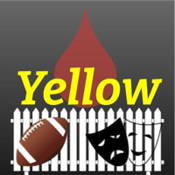
Overview
Synopsis
Playwright Del Shores is known for his comedic takes on religion, LGBT issues, and life in the southern United States. Those themes are still very present in Yellow, but with a markedly different tone than other plays in Shores’ canon. Yellow revolves around the Westmoreland family, who seemingly have a picture-perfect life in Vicksburg, Mississippi--until a serious medical diagnosis forces a devastating secret to the surface. The play moves from sitcom in the first act to domestic drama in the second, with roles for both adult and teen actors who can navigate the emotional shifts. It may serve as a good fit for community theatres looking for emotional, thought-provoking material equally balanced with humor.
Show Information
Context
Del Shores’ Yellow, first staged in 2010 at the Coast Playhouse in Los Angeles, is a raw and deeply emotional drama that examines the hidden fractures within an apparently idyllic Southern family. Shores, known for works like Sordid Lives and Southern Baptist Sissies, departs from his trademark biting comedy to craft a more somber piece, though one still infused with his sharp ear for dialogue. Set in Vicksburg, Mississippi, the play explores the lives of Bobby Westmoreland, a high school
to read the context for Yellow and to unlock other amazing theatre resources!Plot
Characters
| Name | Part Size | Gender | Vocal Part |
|---|---|---|---|
|
Lead |
Male |
|
|
|
Lead |
Female |
|
|
|
Supporting |
Female |
|
|
|
Supporting |
Male |
|
|
|
Supporting |
Male |
|
|
|
Supporting |
Female |
|
Songs
A song with an asterisk (*) before the title indicates a dance number; a character listed in a song with an asterisk (*) by the character's name indicates that the character exclusively serves as a dancer in this song, which is sung by other characters.
Monologues
Scenes
Key Terms
Catharsis is the emotional release experienced by the audience at the conclusion of a tragedy or intense dramatic work. It allows viewers to purge feelings of fear, pity, or tension through the resolution of the play’s conflict. The concept dates back to Aristotle, who believed catharsis was central to the purpose of theatre.
The central struggle between opposing forces in a play, driving tension and character development.
A group of performers who function as a unit in a production rather than as individuals with leading roles.
A dramatic genre with exaggerated characters and emotions, often including music to enhance moral and emotional stakes.
Naturalism is a theatrical style that seeks to depict life with accuracy, focusing on everyday speech, behavior, and settings. It often highlights ordinary people in realistic environments, emphasizing authenticity over theatricality. Emerging in the late 19th century, naturalism remains influential in contemporary drama.
A theatrical movement that strives to depict everyday life and authentic behavior on stage. It often focuses on domestic settings and psychological depth.
A comedic television format that influences theatrical writing styles with episodic structure and ensemble casts.
Subtext refers to the unspoken thoughts, emotions, or intentions that lie beneath a character’s dialogue or actions. It provides depth and complexity to performances, allowing audiences to sense hidden conflicts or desires. Directors and actors often rely on subtext to create nuance and tension in storytelling.
Videos
Quizzes
Themes, Symbols & Motifs
Themes
Family Bonds and Secrets – The play
to read about the themes, symbols and motifs from Yellow and to unlock other amazing theatre resources!Quote Analysis
Sorry! We do not currently have learning modules for this guide.
